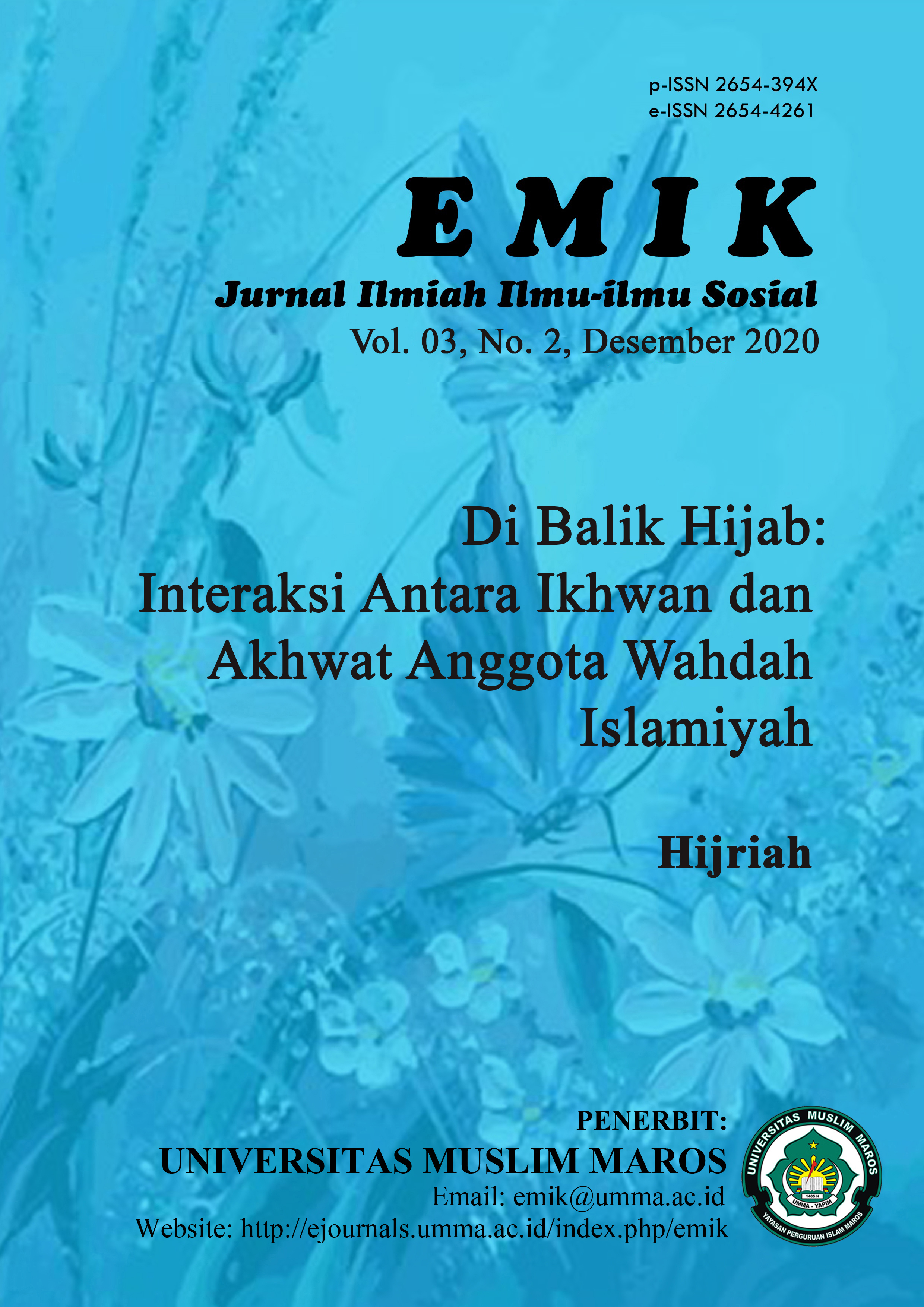Di Balik Hijab: Interaksi Antara Ikhwan dan Akhwat Anggota Wahdah Islamiyah
Abstract
While most of the existing literatures deal with hijab in the context of clothing, this article focuses on hijab as the bulkhead between men and women. I examine how hijab is understood, is indoctrinised, and is applied in activities conducted by Wahdah Islamiyah.
This qualitative research was conducted in Makassar as the center of Wahdah Islamiyah Organisation in Indonesia. It involved 12 informants, consisting of evelen akhwat and an ikhwan. Their age ranging between 22 and 50 years, and from various statuses, from research and development coordinator, active cadres, to ex-staff official at Wahdah Islamiyah. Data was collected using in-depth interview and observation.
The study indicates hijab in the context of Wahdah Islamiyah is divided into three, clothing hijab, heart hijab, and barrier hijab. Even though these three tpoes of hijab is associated with the interaction manner between ikhwan and akhwat, each has its own uniqueness. While clothing hijab is related to body cover from head to toe; heart hijab is associated with how hijab is applied in everyday life; barrier hijab is related to the barrier between ikhwan and akhwat in their social interaction. In Wahdah Islamiyah, hijab has been introduced from the beginning dam is internalized in tarbiyah, from the basic to the advance level, from the introduction, understanding, the application of hijab. In teraction between ikhwan and akhwat is always insulated by hijab. There are a number of strategy to limit the interaction behind the hijab, and they are using email, connection letter, social media (such as Whatsapp), text messages, etc. A number of activities that involved ikhwan and akhwat have to employ barrier hijab such as musyawarah, study, tarbiyah and tahsin, walimah, and they are using barrier hijab in such social interaction. It is argued in this article that hijab pembatas plays a significant role in Wahdah Islamiyah activities that involve ikhwan and akhwat.
References
Awalia, N. 2016. Jilbab dan Identitas Diri Muslimah: Studi Kasus Pergeseran Identitas Diri Muslimah di Komunitas “Solo Hijabers” Kota Surakarta. Fakultas Komunikasi dan Informatika, Universitas Muhammadiyah Surakarta, Surakarta.
Engineer, A. A.. 2003. Matinya Perempuan: Transformasi Al-Qur’an, Perempuan, dan Masyarakat Modern (diterjemahkan oleh Akhmad Affandi). Yogyakarta: IRCISod.
Hildawati, H. dan Lestari, A. 2019. “Taaruf Online dan Offline: Menjemput Jodoh Menuju Pernikahan”, EMIK, Desember, 2(2):128-148.
Jasmani. 2013. “Hijab dan Jilbab Menurut Hukum Fikih, Jurnal Al-‘Adl, Juli, 6(2):62-75.
Nisa, K. dan Rudianto. 2017. “Trend Fashion Hijab Terhadap Konsep Diri Hijabers Komunitas Hijab Medan”, Jurnal Interaksi, Januari, 1(1): 105-117.
Ramadhini, E. 2017. “Jilbab sebagai Representasi Simbolik Mahasiswi Muslim di Universitas Indonesia”, MASYARAKAT: Jurnal Sosiologi, 22(1):81-103.
Suhendra, A. 2013. “Kontestasi Identitas Melalui Pergeseran Interpretasi Hijab dan Jilbab Dalam Al-Qur’an”, PALASTREN, Juni, 6(1): 1-22.
Tahir, K. 2017. Fenomena Hijab di Kalangan Wahdah Islamiyah Kota Makassar: Suatu Tinjauan Budaya Islam. Skripsi, Fakultas Adab Dan Humaniora UIN Alauddin, Makassar.
Yulikhah, S. 2016. “Jilbab Antara Kesalehan Dan Fenomena Sosial”,
Jurnal Ilmu Dakwah, 36(1):96-117.




